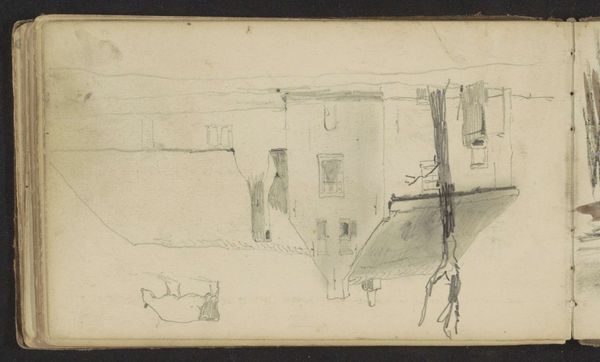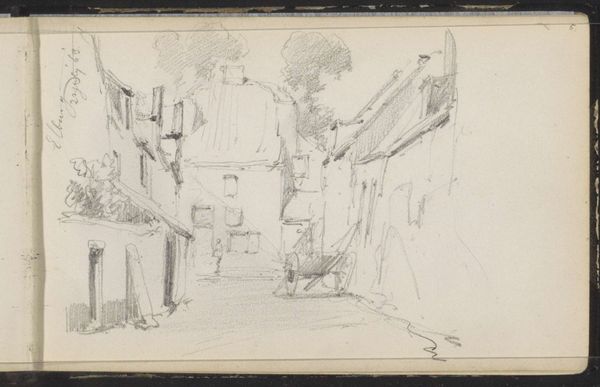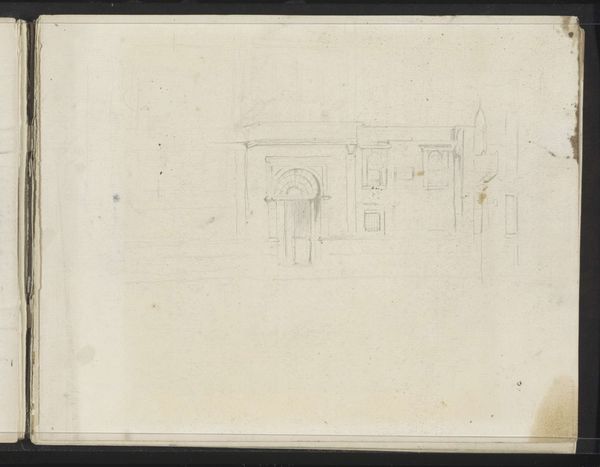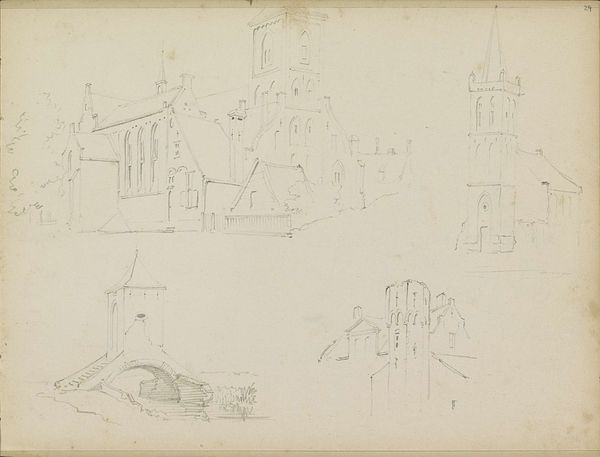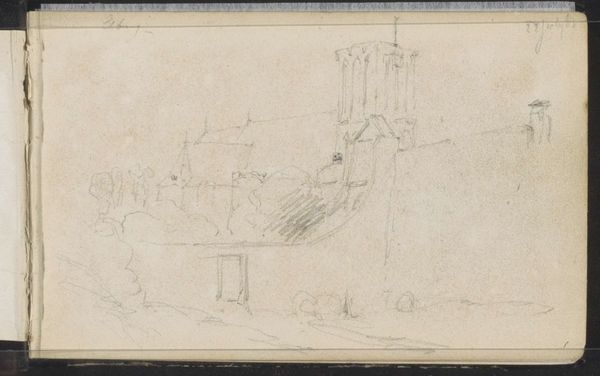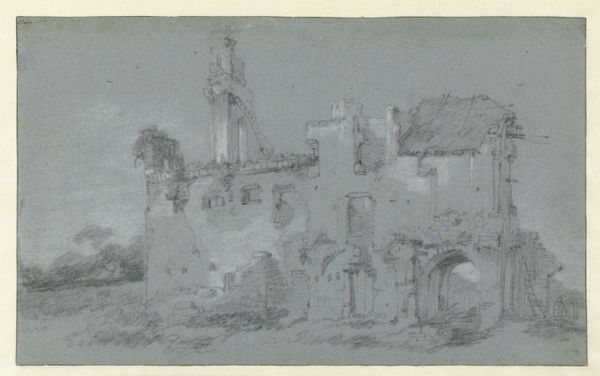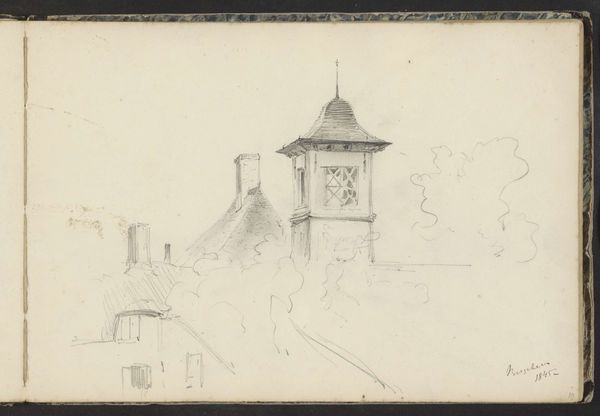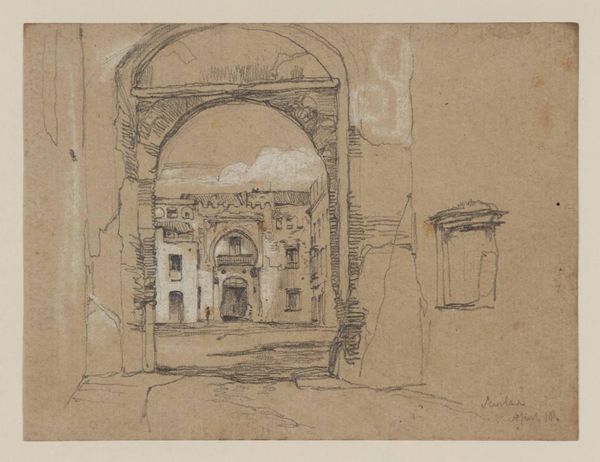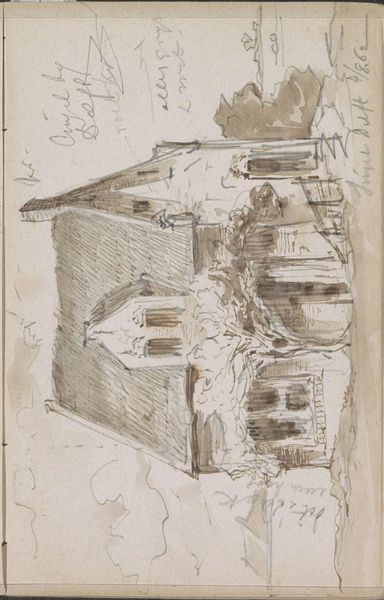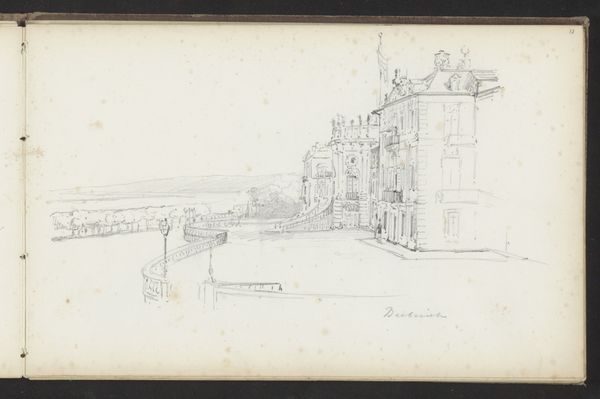
drawing, pencil
#
drawing
#
dutch-golden-age
#
landscape
#
pencil
#
cityscape
#
realism
Copyright: Rijks Museum: Open Domain
Cornelis Springer made this sketch of the Weduwenhof in Elburg at an unknown date. The Weduwenhof, or widows' house, built in 1650, served as a home for impoverished widows, often elderly, reflecting a time when women's economic survival was deeply entwined with marital status. This drawing gives us pause to think about the significance of architecture and the historical narratives it embodies. Look at the woman standing by the door, and consider her position in Dutch society. Does she represent the reality of the women who depended on this institution? How did the widows experience community and support within its walls? Springer's delicate rendering invites us to reflect on the intersection of gender, class, and aging, and to consider the human stories behind the stones. The Weduwenhof is not just a building; it's a symbol of societal structures and the lives they touched.
Comments
No comments
Be the first to comment and join the conversation on the ultimate creative platform.


